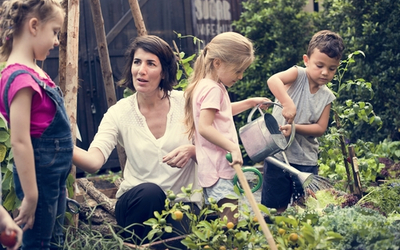Efficient irrigation saves water. When plants are grouped by their water needs, plants that need water more often in summer, such as vegetable gardens, fruit trees or turf, can be accommodated while desert natives with the lowest water needs can be watered less often or not at all once they are well-rooted.
Choose lawn sprinklers that spray droplets, not high-pressure mist. They should have a low spray angle and be operated at the coolest, least windy times of day to minimize evaporative loss.
Most other plants should be watered with low-flow or drip irrigation equipment, applying water only where plant roots can access it, and only as often and as deeply as the plants require. Such careful application of water has the added advantage of minimizing weeds and preventing pest problems.
Plants use the least amount of water when they are dormant during the coldest winter months and the most water when they are actively growing, blooming and producing fruit in summer. In spring as temperatures rise and in autumn as temperatures fall, watering times should be adjusted to keep plants healthy without waste. Plants pushed with extra water in spring may leaf out or flower earlier, making them more vulnerable to late spring frosts. Likewise, watering too much in autumn can keep plants soft going into cold weather and make them more vulnerable to frost damage.
An automatic irrigation controller is only as efficient as the program that runs it – and the programmer who sets the run times – so program for wise water use, and water only as much as the landscape needs.
Remember, too, that even the best-designed irrigation system must be main- tained to retain its optimum efficiency. Fix leaks and make sure water lines are clean and unobstructed for peak performance.


